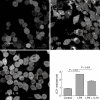Autophagy in the immune response to tuberculosis: clinical perspectives
- PMID: 21438870
- PMCID: PMC3087924
- DOI: 10.1111/j.1365-2249.2011.04381.x
Autophagy in the immune response to tuberculosis: clinical perspectives
Abstract
A growing body of evidence points to autophagy as an essential component in the immune response to tuberculosis. Autophagy is a direct mechanism of killing intracellular Mycobacterium tuberculosis and also acts as a modulator of proinflammatory cytokine secretion. In addition, autophagy plays a key role in antigen processing and presentation. Autophagy is modulated by cytokines; it is stimulated by T helper type 1 (Th1) cytokines such as tumour necrosis factor (TNF)-α and interferon (IFN)-γ, and is inhibited by the Th2 cytokines interleukin (IL)-4 and IL-13 and the anti-inflammatory cytokine IL-10. Vitamin D, via cathelicidin, can also induce autophagy, as can Toll-like receptor (TLR)-mediated signals. Autophagy-promoting agents, administered either locally to the lungs or systemically, could have a clinical application as adjunctive treatment of drug-resistant and drug-sensitive tuberculosis. Moreover, vaccines which effectively induce autophagy could be more successful in preventing acquisition or reactivation of latent tuberculosis.
© 2011 The Authors. Clinical and Experimental Immunology © 2011 British Society for Immunology.
Figures


References
-
- World Health Organization (WHO) WHO declares tuberculosis a global emergency (press release) 1993. WHO/31 4-23-1993.
-
- Corbett EL, Watt CJ, Walker N, et al. The growing burden of tuberculosis: global trends and interactions with the HIV epidemic. Arch Intern Med. 2003;163:1009–21. - PubMed
-
- World Health Organization (WHO) Global tuberculosis control: a short update to the 2009 report; 2009 WHO/HTM/TB/2009.426
-
- Kuma A, Hatano M, Matsui M, et al. The role of autophagy during the early neonatal starvation period. Nature. 2004;432:1032–6. - PubMed
Publication types
MeSH terms
Substances
LinkOut - more resources
Full Text Sources
Other Literature Sources
Medical

